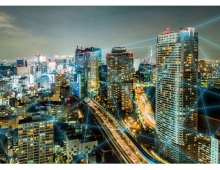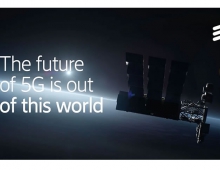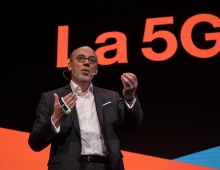
MWC: Philips and Ericsson Unite On Smart Street Lighting
Philips and Ericsson have jointly launched a new connected LED street lighting model, a project that combines city street lighting with mobile phone infrastructure.
The companies combine the benefits of mobile connectivity and LED lighting in a "lighting-as-a-service" model for cities. It allows city authorities to offer space within their connected lighting poles to network service providers for mobile broadband infrastructure.
Philips will now offer cities LED street lighting that can include mobile telecoms equipment from Ericsson. Mobile operators working with Ericsson for mobile broadband infrastructure will be able to rent space in the poles. In this way, mobile network operators will be able to improve data coverage and capacity for citizens, resulting in enhanced mobile broadband services. The model also accelerates the payback time for city infrastructure, by making the up-front costs of installing and managing these systems more affordable, so reducing the strain on city budgets.
"This is a concept that has resonance in all parts of the world," said Frans van Houten, Philips's chief executive. "You can't have a single design for all cities. The look and feel of the streetlights are very important."
To meet the demand for coverage and capacity, mobile operators need to improve, densify and add many more radio cell sites in dense areas. The new connected street light pole, designed to house Ericsson's suite of small cell products, offers network operators new possibilities to find the right site location. It will also help to scale the deployment of mobile broadband technology beyond traditional sites - a key enabler for evolving heterogeneous networks.
Philips will now offer cities LED street lighting that can include mobile telecoms equipment from Ericsson. Mobile operators working with Ericsson for mobile broadband infrastructure will be able to rent space in the poles. In this way, mobile network operators will be able to improve data coverage and capacity for citizens, resulting in enhanced mobile broadband services. The model also accelerates the payback time for city infrastructure, by making the up-front costs of installing and managing these systems more affordable, so reducing the strain on city budgets.
"This is a concept that has resonance in all parts of the world," said Frans van Houten, Philips's chief executive. "You can't have a single design for all cities. The look and feel of the streetlights are very important."
To meet the demand for coverage and capacity, mobile operators need to improve, densify and add many more radio cell sites in dense areas. The new connected street light pole, designed to house Ericsson's suite of small cell products, offers network operators new possibilities to find the right site location. It will also help to scale the deployment of mobile broadband technology beyond traditional sites - a key enabler for evolving heterogeneous networks.





















